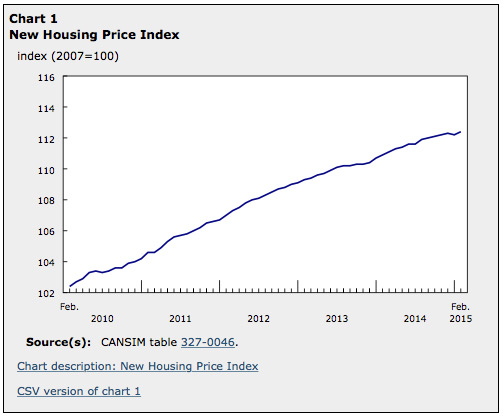Planification de la relève – Pourquoi c’est important?

Michelle Branigan
Pourquoi la planification de la relève est-elle un enjeu aussi important pour les employeurs de l’industrie électrique? Nous n’avons tout simplement pas assez de personnes talentueuses dans notre mire. Deux raisons causent cet état de fait. Le premier réfère à des raisons démographiques qui touchent la plupart des industries au pays. Nous avons une population vieillissante et un nombre important d’employés qui prendront leur retraite bientôt. La seconde raison réfère aux infrastructures qui devront être changées au cours des décennies qui viennent. En 2016, les plus jeunes des baby-boomers auront atteint l’âge de la retraite dans notre industrie, soit 58 ans et plusieurs auront accumulé les années d’ancienneté nécessaires pour se qualifier pour une retraite à plein salaire. Plusieurs prendront donc leur retraite.
Lire l’article …
Why is succession planning such a critical issue for employers working in or supporting the electricity sector?
We simply don’t have enough people in the talent pipeline. There are two key drivers causing this pressure. The first is the demographics issue that is challenging not only for us but for most industries across the country. We have an aging populace and a large number of employees taking retirement. The second relates to the infrastructure changes that will take place over the coming decades.
By 2016, all but the youngest boomers will have reached the average age of retirement for our sector, 58, and will likely have the 30 years of experience needed to qualify for full pension. A high proportion will take it.
Here are just some of the potential impacts of a loss of such a large and skilled group retiring in a short span of time:
1. infrastructure projects slowed or stopped due to lack of human resources
2. reliability lessened due to not enough staff to maintain system support
3. cost of production increased
4. one company failing and impacting on many others (e.g., 2003 North-East blackout)
5. new entrants in the workforce who reduce safety and productivity (new workers are less productive and knowledgeable)
So what does this mean for companies right now? When coupled with the fact that employees in the trades currently require five or more years of on-the-job training to become proficient at their job, and 10 to 20 years to develop leadership/managerial skills, retirement poses a significant safety and performance risk.Retiring workers, representing nearly one-third of a million years of expertise, will be replaced by staff with marginal practical experience.
It also means that succession planning is not just the domain and responsibility of the HR function. It should be seen by the leadership as a key priority and included in strategic business planning for the organization.
Retirements and departures mean that a vast amount of corporate memory, and specialized knowledge and expertise will be lost. To face these challenges, organizations need to consider formalized ways to ensure that the business will not suffer from those departures. As such, succession planning is now part of most organizations’ strategic HR planning. They have recognized the need for long-term planning as well as the advantage of having a quick turnaround to replace key players in the organization. However in EHRC’s 2008 study of the electricity sector we found that just over 30% of firms plan to fill their gaps by hiring from within the industry, otherwise known as poaching. In reality, this is not a sustainable approach to workforce management.
Traditional succession planning involves implementing a formal process to identify, evaluate and develop candidates internally (and occasionally externally) to fill key leadership positions within the organization. These roles are usually limited to higher management, including the CEO position. And of course identifying and planning for future executive and key leadership roles to ensure business continuity and instill confidence in stakeholders is essential.
However, more and more organizations are looking outside of the executive suite. More companies are recognizing that technical and specialized positions within their organizations will soon be left vacant and the expertise will be difficult to replace without a formalized strategy to either identify talent externally or develop potential internally. Thus, key to the succession planning process is the identification of critical talent.
What we heard from the electricity sector
During EHRC’s research into succession planning, we identified best practices and developed tools for industry members to use in implementing succession planning in their own organization.
A critical objective of this project was to facilitate the development of processes that support not only the development of leadership candidates but also those critically skilled mid-level technical professionals whether trades, engineering or technician/technologist.
We looked at succession planning theory, current industry practices, both in Canada and abroad, and in our sectors and others.The data collected were subsequently used to identify best practices and identify the types of succession planning tools that would best help the industry implement succession planning.
Here’s a sample of what we heard:
• Most respondents indicated that they have adequate systems to measure the number of departures in the coming year. However, the majority state that they can only adequately forecast departures for up to 3 years.Most respondents did not have a tool to determine critical occupations or those with high impacts on the organization.
• A majority of organizations have performance management programs in place to evaluate employee skills/competencies and determine readiness for positions.
• Most organizations continue to use a completely paper-based succession planning process.
• Most organizations have developed leadership development . However, it was felt that they are only moderately effective.Two-thirds of the sector asked for more tools in this area.
• Whilesenior management is kept informed of and is accountable for critical vacancies within the organization, thischanges as the company gets bigger.
• 90% of participants felt that less than 10% of staff would leave due to reasons other than retirement.
• 32.1% either felt their current forecasting system was minimally effective or did not have something in place.
In my column next month, I’ll speak to some of the common barriers and challenges to avoid when implementing a succession planning strategy, and some of the best practices we found.
Michelle Branigan is CEO, Electricity Human Resources Canada; http://electricityhr.ca.











